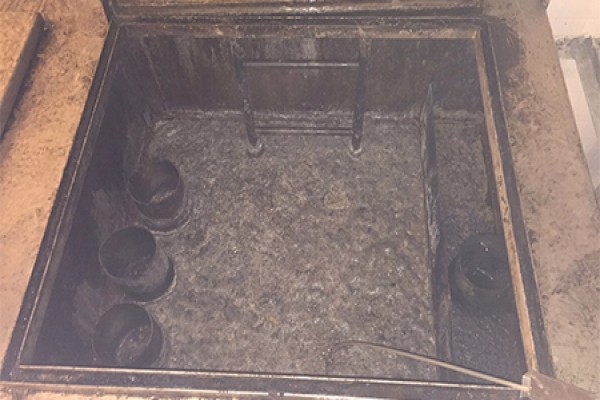The usage and dosage of garbage deodorants in various places
garbage deodorant It can effectively remove odorous gases such as hydrogen sulfide and ammonia, with a deodorization and fly suppression rate of over 70%. So, how much and how to use waste deodorants in different places? Next, let's take a look at it
1. The use of waste transfer stations.
Each cubic meter of waste is treated with 0.1 kilograms of waste deodorant, diluted 10 times and sprayed onto the waste. Each time new waste is brought in, it must be sprayed.
2. The use of waste deodorants in landfill sites.
(1) Usage of enhanced deodorization for existing waste: Before conventional treatment, perform a one-time enhanced deodorization treatment on the existing waste in the waste yard. At this time, use a 10 times diluted waste deodorizer solution for spraying, spraying 0.5 kilograms per square meter of waste exposed surface, and spraying three times within 10 days.
(2) The usage of deodorization for waste exposed surfaces: Dilute the waste deodorant 100 times and spray it on the exposed surface and the surface where the filtrate flows. Spray 0.5 kilograms of diluent per square meter, and spray it 1 to 2 times a day in summer and every 2 to 3 days in winter.

3. The use of deodorization treatment in leachate.
(1) The usage of waste deodorant for one-time deodorization of existing leachate: 0.1 kg of waste deodorant is used per cubic meter of leachate collected in the leachate collection tank, diluted 10 times, and then sprayed into the tank. It must be sprayed 3 times within 10 days, and then every 5 to 7 days thereafter.
(2) Usage of maintenance deodorization: Based on the amount of new waste leachate produced, dilute 10 times per ton with 0.05 kilograms per day and spray.
4. The use of deodorization and fly suppression in breeding farms.
(1) Usage of waste deodorant in enclosure deodorization: dilute the waste deodorant 100 times, spray all parts of the enclosure with a spray evenly, including the ground, corners, cages, manure tanks, etc., once every 7 days in the initial stage, and once every 10 to 15 days after 2 to 3 times of continuous spraying.
(2) Usage of deodorization in septic tanks: Based on the existing capacity of feces in the septic tank, dilute it 10 times by one thousandth and spray it evenly into the tank. Within 3 days, spray it three times in a row, and then spray it every 5 to 7 days by one thousandth.
5. The use of waste deodorants in the deodorization of eutrophic wastewater.
Small rivers, lakes, ponds, ditches, landscape waters, etc., are uniformly sprayed with a certain concentration of deodorizing and purifying agents based on water quality. The dosage of bacterial agents per ton of water is between 0.01 and 0.05 kilograms, and it should be treated three times in a row within 7 days. After three times, when the water quality significantly improves, it should be treated every 20 to 30 days.
6. The use of deodorization in organic wastewater.
Organic wastewater from slaughterhouses, food processing industries, leather processing industries, and other industries is treated for deodorization by adding 0.01 to 0.1 kilograms of deodorizing purification agent per ton of wastewater and diluting it by 10 times for spraying or evenly adding it from the sewage discharge outlet. After 5 to 7 days, the odor is completely eliminated, the water quality is significantly improved, and the sludge sediment is reduced, especially the oil content is significantly reduced, which is conducive to the collection, transportation, and consumption of sludge.
In addition, when using waste deodorants to deodorize toilets and sewers, dilute this product by 5 to 10 times and spray it directly onto the floor or pit of public toilets, or pour it into the toilet and sewer.
The article originates from a deodorant manufacturer http://www.scneng.com.hk
-
06-11
"Environmental Doctor" Du Siyuan: Environmental Protection is a Lifestyle Attitude
There is a Hong Kong compatriot in Jiangmen who often frequents various farms and plantations, walks in mechanical factories, and is seen by others as the nemesis of environmental problems. He conside
-
03-16
Deodorant manufacturer: Deodorants reduce soil pollution
Waste is a chaotic mixture of various components. The accumulation of debris on the surface of soil can cause some chemical reactions, releasing harmful gases, which can lead to soil pollution and eve
-
12-01
Deodorant Manufacturers: Differences between Microbial Deodorants and Traditional Deodorants
The waste that is not needed in our daily life and work is called waste. Due to the large amount of waste discharged and the complex categories, there are great difficulties in reducing waste and deod
-
11-08
Application of Deodorant Manufacturers in Domestic Waste Treatment
Garbage is the waste generated in everyone's daily life and work. Due to its large discharge volume and complex and diverse composition, it poses great difficulties in reducing and deodorizing wa
